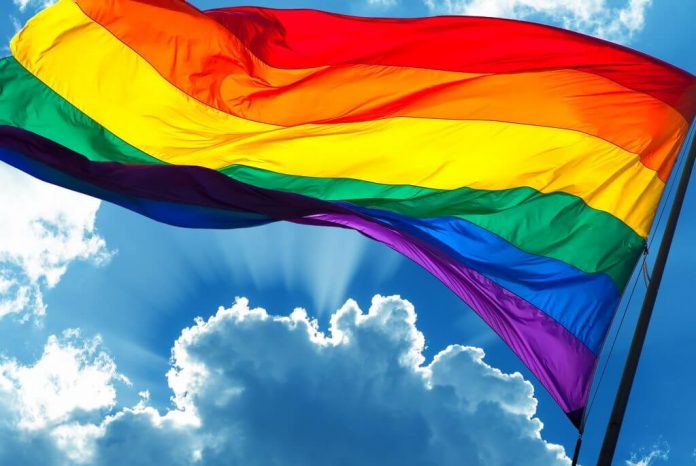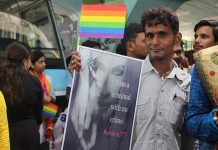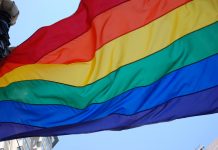This article has been written by Indrasish Majumder.
Table of Contents
Introduction
“Thanks for marriage but we need healthcare” —- Participants at the Trans Pride March on June 16, 2018.
LGBTQ people face a lot of challenges in social, political, and cultural life — the primary reason being the absence of legal recognition. It is one of the most comprehensible hindrances that often restrict them to employ their rights associated with marrying the person of their preferred gender to child adoption to employment to access healthcare facilities and health insurance schemes. The stigma of being a member of LGBTQ culture is so high that people, especially youth, often fear revealing their sexual identity. Thus, it becomes difficult to identify the actual number of LGBTQ people in a community.
However, in 1994 Laumann and associates, used the “National Probability Health and Social Life Survey combined with data collected in the General Social Survey”, ascertained that 2.8% of men and 1.45% of women recognize themselves as gay or lesbian, while 7.7% of men and 7.5% of women have homosexual desires. Perhaps the most misinterpreted population inside the spectrum of the LGBTQ community are the bisexual individuals — because for some people the recognition of their bisexuality is continuous and lifelong, while for some sexual orientation is fluid in nature and shifts from being heterosexual to gay or lesbian or vice versa. Thus, mistaken beliefs about bisexuality is often noticed and unfortunately sometimes the healthcare service providers also embrace some of those myths and perceive bisexual people to have emotional and psychological damage. LGBTQ individuals confront almost all the same issues that a regular person faces as they progress through life. In fact, it is noticeable that an LGBTQ individual witness apparently more difficult life cycle issues — like “coming out” of the mainstream sexual orientation and disclosing about the choice of “being different” involves the risk of rejection and ostracism.This article explores and identifies the varying degree of healthcare discrepancy encountered by the LGBTQ community in accessing and utilizing of healthcare services and the multiple manifestations of discrimination they face which stems from heterosexism and traditional views regarding sexuality. The article also talks about the LGBTQ Health rights and demonstrates some effective approaches to protect the healthcare rights of the LGBTQ individuals
Terminology and conceptual understanding
The notion of “sexual orientation” constitutes “a complex, multidimensional construct that reflects an individual’s sexual behavior, attraction and identity that responds to environmental context and may change across the life course” (Laumann et al., 1994; Sell, 1997). People whose sexual orientation is to individuals of the alternate sex are “heterosexual” and those individuals whose orientation is to people of the same sex are “homosexual”, with women who are primarily oriented to other women referred to as “lesbian” and men who are primarily oriented to other men referred to as “gay”. Gender, on the other hand, is defined as a psychological, social and cultural construction of factors that classifies individuals as “male, female, both or neither, with individuals traditionally assigned a gender role at birth based on one’s sex, the anatomy and physiology that determines whether one is biologically male, female or intersex” (Johnson, Mimiaga, and Bradford 2008). The people who specify not to conform to any particular mainstream social norms are regarded as “gender variant” (Gender Education & Advocacy, 2001). This amount of diversity thus demands the necessity of healthcare service providers to approach the LGBTQ individuals (patients) with few or no prior assumptions about them and to have a broadened outlook to the needs of these patients within their cultural milieu.
Fear of stigmatization and access to healthcare
There exists a varying degree of health discrepancy within the LGBTQ community which includes “access and utilization of programs and services” (Johnson, Mimiaga, and Bradford 2008). For instance, in a study of Women’s Health Initiative (with a sample size of 96000 older women from US), it was demonstrated that heterosexual women are comparatively more insured than lesbian and bisexual women (Valanis et al., 2000). The highest uninsured people belong from the transgender spectrum as most healthcare services associated to transgender issues is not covered by insurance, making transgender health care very expensive (Gay and Lesbian Medical Association et al., 2001).
The social stigmatization associated with the LGBTQ community that results in the feeling of shame, self-hatred which in turn gives rise to low self-esteem, depression, anxiety, alcohol and drug dependence, substance use disorders, panic attacks among other things. Many LGBTQ individuals often witness discrimination or refusals of service from healthcare professionals, or sometimes they often delay or forego care because of concerns of mistreatment or perceived homophobia. A Healthy People 2020 report found that “LGBTQ youth are 2 to 3 times more likely to attempt suicide, more likely to be homeless, and have a higher risk of HIV and other sexually transmitted diseases (STDs).” According to Ryan Thoreson, an LGBTQ rights researcher at Human Rights Watch “Discrimination puts LGBT people at heightened risk for a range of health issues, from depression and addiction to cancer and chronic conditions.” Despite healthcare being a right, when required LGBTQ individuals often witness a higher number of obstacles to assess and avail the services. Also, at times within the healthcare premises, transgender people often face inappropriate and unprofessional remarks and questions about their sexual preferences and genetalia which results in distrust and apprehension for the healthcare service institution.
Availing healthcare services for the LGBTQ community
Access or availing healthcare refers to the methods in which healthcare facilities are (or are not) addressable to the LGBTQ community. Even before addressing healthcare service providers, LGBTQ individuals can witness complexity in looking for the particular care they need. If they encounter bias or prejudice, they often do not have an alternative provider available. “Data collected by the Center for American Progress indicates that 18 percent of LGBT people believe that if they were refused care at a hospital, it would be “very difficult” or “not possible” to find an alternative provider.” Although LGBTQ individuals in general have the same basic health needs as do all other people, they also have health needs associated with being LGBTQ. For instance, everyone should undergo early childhood immunizations but due to an identified higher risk, an young adult LGBTQ individual should be routinely immunized for hepatitis A, hepatitis B, and influenza.
In a study it was found that in the United States men who have sex with men continue to be disproportionately affected by HIV/AIDS, accounting for 49% of all HIV/AIDS cases diagnosed in 2005 (CDC, 2006), with depression occurring among 20–37% of infected individuals (Olatunji et al., 2006). However, it is noted that only a few LGBTQ healthcare consumers or organizations have openly voiced the specific needs and concerns of this multicultural group. LGBTQ individuals, particularly non-white, remain “hidden”. They lack the potential for being legitimized and criticality to participate in the design of services that may empower their access and availability to appropriate healthcare. Leidolf and colleagues, in an article titled “Intersex Mental Health and Social Support Options in Pediatric Endocrinology Training Programs,” wanted to analyze the degree to which the mental supportive services available among those “providers most likely to evaluate and treat intersex children and their parents.” The resulting report documented that “69% of programs offered psychological support and 58% had a dedicated mental health specialist on staff”. In spite of these, it was reported that only “19% of patients or families reportedly received psychological support during diagnosis and 15% after diagnosis.” The anecdotes of the respondents advocate that these services were not adequate and were provided on an “as-needed” basis, or simply were not requested by patients. However, the specific reasons for these disparities in accessibility and utilization of psychological health services among these people and their families remain obscure and demand further scrutinization (Leidolf et al., 2008).
However, in some of the recent studies it is noted that LGBTQ consumers, patients, as well as health care advocates, are breaking their silence on care-taking and care-giving. For instance, the American Public Health Association had acknowledged the special health concerns of LGBT populations with a policy statement on the need for research on gender identity and sexual orientation and a subsequent journal issue wholly dedicated to the topic in 2001” (American Public Health Association, 1999; Meyer, 2001) and the inclusion of gays and lesbians in Healthy People 2010.
The passion and constant effort of advocates of Los Angeles, Santa Clara, Alameda, and Humboldt Counties made the quest for safe and accessible healthcare for LGBTQ population practicable. With their perseverance, they have made it possible to successfully implement transgender health care services. For instance, Danielle Castro, a transgender Latina woman often faced difficulty in availing healthcare services. She believed that she alone was not facing this kind of situation but many other LGBTQ individuals are also dealing with similar sets of issues. She was referred to Transpowerment (a county health program housed at Community Health Partnership created to reduce HIV infection and transmission among transgender people and their partners). She chose to work in that organization as a health trainer (hired by the Pacific AIDS Education and Training Center (PAETC) through their Minority AIDS Initiative funds). As she belonged from the transgender community, she was able to connect Transpowerment to the low-income transgender populations and started a multicultural support group. Danielle realized the need for healthcare services among this group and worked to become an excellent trainer with the guidance of JoAnne Keatley, PAETC Minority AIDS Initiative Program Manager. Shortly after the support, Transpowerment also focused on training to provide services to gay people and other sexual minorities —which help to create an ensuring place where LGBTQ people could get healthcare support and services.
Availability of standard healthcare services for LGBTQ population in rural areas are more challenging than in urban settings
There are an abundance of accounts and testimonies of people “being denied medical treatment, subjected to verbal abuse and public humiliation, psychiatric evaluation, a variety of forced procedures such as sterilization, State-sponsored forcible anal examinations for the prosecution of suspected homosexual activities, and invasive virginity examinations conducted by healthcare providers, hormone therapy and genital normalizing surgeries under the guise of so called “reparative therapies”. Isolation from healthcare services is very common in rural areas. To further worsen the situation, if an individual belongs from the “other” identity based-groups, then the isolation adds on another layer which creates unruly concoction of healthcare barriers for LGBTQ individuals. The professor of Health behavior Doctor Rob Stephenson has conducted a study on rural LGBTQ people and learnt that failing to “come out” and reveal sexual orientation and gender identity results in decreased healthcare utilization: “Not age or education or income. Nothing else mattered. All that mattered was whether or not your doctor knew you were gay,” Thus the rural LGBTQ individuals carry a burden of anxiety and negative stereotypes within themselves and distance themselves from availing healthcare services.
Providing healthcare to all is the ultimate public health goal
and the accomplishment of this goal explicitly demands elimination of different levels of discrepancies that exist in the healthcare delivery system among minority population. However, it becomes extremely difficult and complicated for especially sexual minority population (gay, lesbian, bisexual individuals, transgenders) (Avery, Hellman, & Sudderth, 2001; Garnets, Cochran, Goodchilds, & Peplau, 1991). Thus it becomes imperative to conduct population based surveys to understand the priorities for mental health intervention efforts within these communities, however there are limitations that exist in regard of the inferences that are deduced like the sample size of the individuals who open up about their sexual preferences (within this community) is very small (less than 5% in each study) and again some respondents do not feel comfortable enough to reveal their personal information.
Availability of healthcare services and economic status are closely knitted. In the year 2008, “Transgender Law Center” carried out a survey within the “transgender Californians”, enquiring about their employment, housing and health care status. The resulting report which was found disclosed these statistics: “among 648 respondents: 30% postponed care due to disrespect or discrimination from health care clinicians; 42% postponed care because they could not afford the medical care they needed; and 26% of those who postponed care reported that their conditions worsened as a result.” The condition further exacerbates as the transition related care such as hormone therapy and gender reassignment surgery are often explicitly excluded from the health insurance plans — which seriously affects both the physical and mental health and economic stability of these minority individuals. As a result, it is often seen that these people have to pay out-of-pocket for the cost of hormones or transition related surgeries or mental health therapy — for which they often avail less expensive care from unlicensed practitioners. Such ignorance and discrimination by the insurance companies and medical service providers lead LGBTQ people struggle every day to meet their basic health needs.
“…[T]here is nothing new or special about the right to life and security of the person, the right to freedom from discrimination. These and other rights are universal … enshrined in international law but denied to many of our fellow human beings simply because of their sexual orientation or gender identity”
—United Nations High Commissioner for Human Rights Navi Pillay, 2012
LGBTQ healthcare rights
The human rightse association with LGBTQ health is the right to enjoy the highest “accessible standard of physical and mental health.” The Yogyakarta Principles on the Application of Human Rights Law in Relation to Sexual Orientation and Gender Identity (the Yogyakarta Principles, signed by 29 international human rights expert) were set to motion on March 26th, 2007 who elaborately work on the rights of all people irrespective of their sexual orientation and gender identity. The 17 and 18 of the Yogyakarta Principles convey “the right to the highest attainable standard of health and protection from medical abuses.” The principle states “Everyone has the right to the highest attainable standard of physical and mental health, without discrimination on the basis of sexual orientation or gender identity. Sexual and reproductive health is a fundamental aspect of this right.”
However, LGBTQ individuals witness multiple manifestations of discrimination stemming from heterosexism and traditional views regarding sexuality. Homophobia, ignorance and the stigma associated with it act not only as an impediment to avail healthcare but also operate as a hindrance in the way of research which in turn perpetuates within the cycle of mistreatment. For instance, on 7th August 1995, a 24-year transgender woman named Tyra Hunter was severely injured in a car accident. The paramedical staff arrived at the scene and started treating Tyra, but when they discovered that she had a penis, they stopped providing treatment and began to mock her. Horrified bystanders did nothing but witnessed the incident silently until someone came on the scene and resumed treatment. Tyra however lost her life. Another incident where an LGBTQ individual named Robert Eads (who was diagnosed with ovarian cancer) was refused treatment for one year as more than dozens of doctors did not want to treat him.
Conclusion and suggestions : accessibility of standard healthcare for LGBTQ people is not a privilege, it’s a right
Some effective approaches to protect health rights of LGBTQ individuals:
- Enable LGBTQ individuals to proclaim their gender identity: To achieve the highest attainable standard of health it is essential to allow people to proclaim their gender identity in state documents and other administrative procedures. According to a report of Harvard school of public health “upholding a right to privacy in relation to past and present gender identity, and the ability to change legal identity to protect this privacy, helps to ensure that LGBTI persons are less likely to be subjected to unlawful discrimination, harassment, and psychological harm.”
- The right to avail proper Gender affirming Healthcare Services: The freedom to define one’s own gender identity is “one of the most basic essentials of self-determination.” Thus, availing appropriate gender affirming healthcare which includes the freedom to change one’s gender through medical intervention is one of the basic healthcare rights that can impact the LGBTQ community. A patient who has undergone partial gender reassignment surgery alleged that: “…[H]is continuing inability to complete gender-reassignment surgery left him with a permanent feeling of personal inadequacy and an inability to accept his body, leading to great anguish and frustration. Furthermore, due to the lack of recognition of his perceived, albeit pre-operative, identity, the applicant constantly faced anxiety, fear, embarrassment and humiliation in his daily life. He has had to submit to severe hostility and taunts in the light of the general public’s strong opposition, rooted in traditional Catholicism, to gender disorders. Consequently, he has had to follow an almost underground life-style, avoiding situations in which he might have to disclose his original identity, particularly when having to provide his personal code. This has left him in a permanent state of depression with suicidal tendencies.” So, it becomes imperative to facilitate the self-determination of gender identity along with the provision of funding of relevant healthcare procedures.
- LGBTQ Individuals in Health Policy Setting: Another way in which the health of the LGBTQ people can be facilitated is through the training of healthcare professionals and service providers to be sensitive enough to the concerns of these people. No healthcare caregivers should treat the identity of the individual rather they should treat the unique needs of the patient. The LGBTQ population should not feel “overlooked or undeserved” when it comes to their healthcare needs and in this regard the health policy makers should prioritize the LGBTQ population group along with the heterosexual consumers.
- Health Education for LGBTQ Population: Another aspect of LGBTI health is the right to educate. “Health education is an important aspect of the right to health for LGBTQ individuals. In many countries around the world, the hetero-norm is reinforced through withholding education about sexual and gender diversity and risking the health of young LGBTQ people in the process.
References
- Connelly, Rosina Avila, and Teri Turner, eds. 2017. Health Literacy and Child Health Outcomes. SpringerBriefs in Public Health. Cham: Springer International Publishing. https://doi.org/10.1007/978-3-319-50799-6.
- Johnson, Carey V., Matthew J. Mimiaga, and Judith Bradford. 2008. “Health Care Issues Among Lesbian, Gay, Bisexual, Transgender and Intersex (LGBTI) Populations in the United States: Introduction.” Journal of Homosexuality 54 (3): 213–24. https://doi.org/10.1080/00918360801982025.
- https://dash.harvard.edu/bitstream/handle/1/29002602/4969060.pdf
- https://cdn1.sph.harvard.edu/wp-content/uploads/sites/2410/2014/03/HHRRG_Chapter-8.pdf.
Students of Lawsikho courses regularly produce writing assignments and work on practical exercises as a part of their coursework and develop themselves in real-life practical skills.
LawSikho has created a telegram group for exchanging legal knowledge, referrals, and various opportunities. You can click on this link and join:
 Serato DJ Crack 2025Serato DJ PRO Crack
Serato DJ Crack 2025Serato DJ PRO Crack










 Allow notifications
Allow notifications



